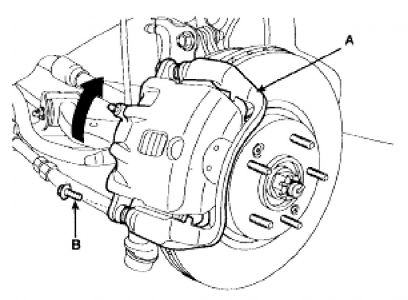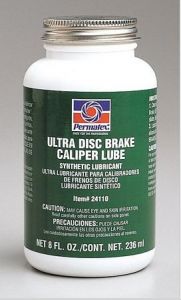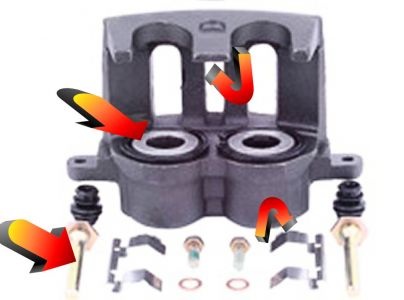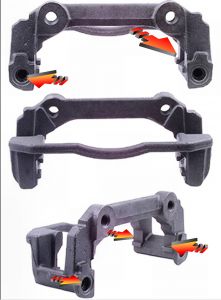Hi,
Replacing brakes and rotors isn't too hard of a job. You can expect them to last approx 25,000 miles, but that is based on driving habits and terrain.
First, here is a link that explains in general how it's done. You can use this link as a guide.
https://www.2carpros.com/articles/how-to-replace-front-brake-pads-and-rotors-fwd
Here are the directions specific to your vehicle. The attached pics correlate with the directions.
Be careful not to damage the hub bolts when removing the front wheel & tire.
Loosen the guide rod bolt (B) and then remove the caliper body (A).
Tightening torque :
21.6 - 31.4 N� m (2.2 - 3.2 kgf� m, 15.9 - 23.1 lb� ft)
Remove the pad return spring (A) and then remove the brake pad.
Loosen the brake hose bolts (A) and then disconnect the hose.
Tightening torque:
Brake hose to caliper (A) :
24.5 - 29.4 N� m (2.5 - 3.0 kgf� m, 18.1 - 21.7 lb� ft)
Caliper assembly to knuckle (B):
78.5 - 98.1 N� m (8.0 - 10.0 kgf� m, 57.9 - 72.3 lb� ft)
Loosen the screw and then remove the disc.
Replacement
Remove the wheel & tire.
Tightening torque :
88.3 - 107.9 N� m (9.0 - 11.0 kgf� m, 65.1 - 79.6 lb� ft)
Be careful not to damage the hub bolts when removing the front wheel & tire.
Loosen the Guide rod bolt (B) and then remove the caliper body (A).
Tightening torque:
21.6 - 31.4 N� m (2.2 - 3.2 kgf� m, 15.9 - 23.1 lb� ft)
Remove the pad return spring (A) and then remove the brake pad.
Replace the return spring (A), pad retainer (B), inner brake shim (C), and brake pad (D) all at the same time when replacing the brake pad.
Using the SST (09581-2T100), install the brake caliper assembly.
Tightening torque:
21.6 - 31.4 N� m (2.2 - 3.2 kgf� m, 15.9 - 23.1 lb� ft)
Do not hammer on the piston or pry directly against piston face using a screwdriver to push in piston.
How to use the SST (09581-2T100)
Connect an air hose (B) to the SST after confirming that the valve of the SST is securely closed.
Insert the SST into the caliper and press the caliper piston while opening the valve of the SST slowly by turning it counterclockwise.
Close the valve (A) of the SST and disconnect the air hose (B); then, open the valve again to get the rest of air out and remove the SST from the caliper.
After installation, bleed the brake system.
(Refer to Brake System - "Repair procedures")
Inspection
Check out the diagrams (Below). Please let us know if you need anything else to get the problem fixed.
Images (Click to make bigger)
SPONSORED LINKS
Thursday, February 18th, 2021 AT 8:01 PM






